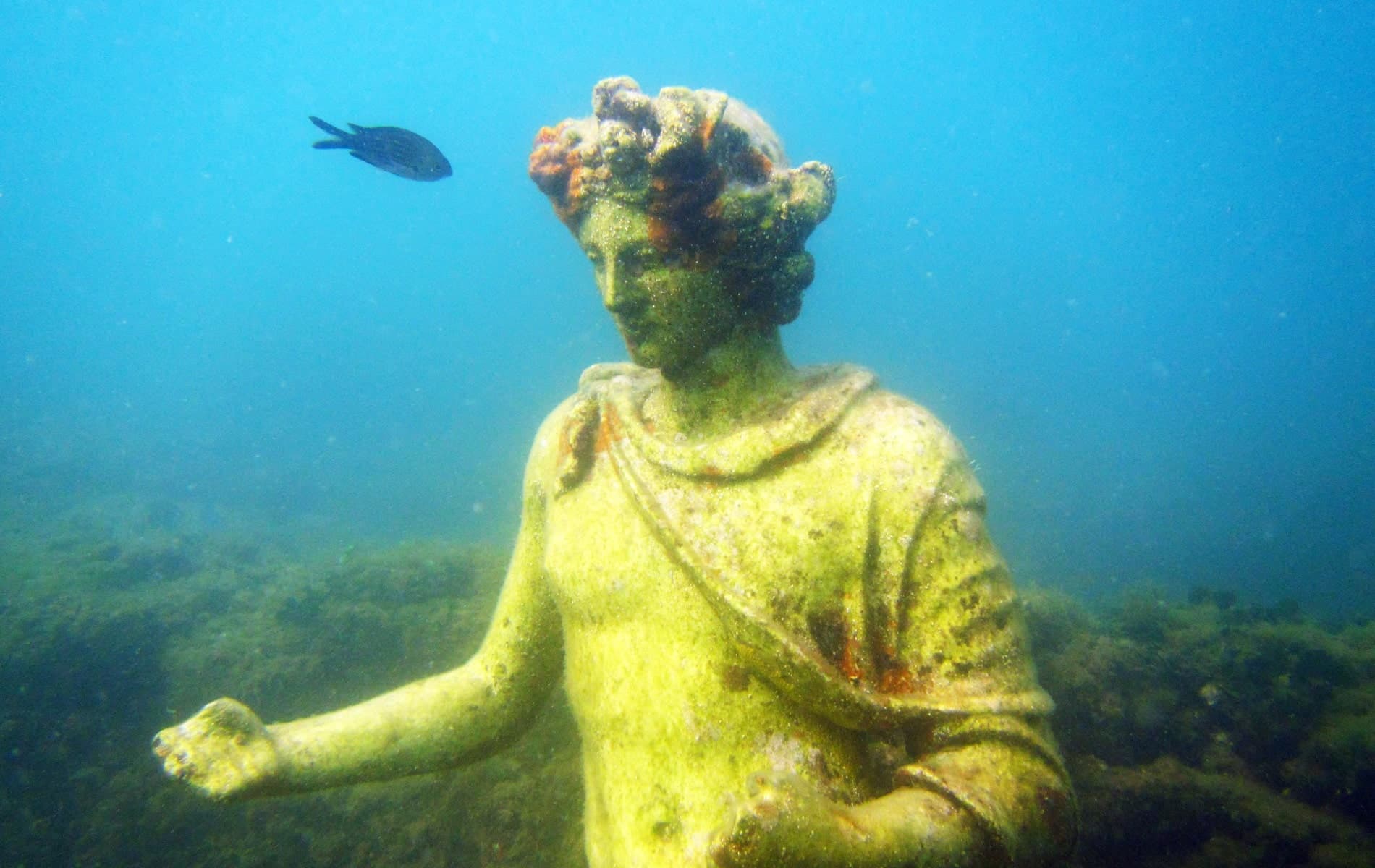
VIE_Magazine_SEP22_article_Preserving_Sunken_Roman_Ruins_HERO-min
A statue of Odysseus in Claudius’s nymphaeum | Photo by Jeremy Brown Dreamstime.com
Italy’s Hidden Depths
Preserving Sunken Treasures with Tech
By Sarah Freeman
When we think of Italy’s rich Roman heritage, spectacular sites like Rome’s domed Pantheon and Verona’s sonically perfect amphitheater come to mind. Little thought is given to the ancient relics relegated to the depths of the country’s four seas, which fringe 4,500 miles of the boot-shaped peninsula. While Pompeii was buried in ash and its better-preserved neighbor, Herculaneum, was swallowed by mud, another of southern Italy’s flourishing resort cities was sent to its watery grave by bradyseism. Defined as a gradual rise or fall in the earth’s crust, though slow-moving, this volcanic phenomenon can be devastatingly destructive.
Three times the size of Pompeii and now submerged six feet under the Tyrrhenian Sea, Baia (pronounced “bye-eye”) is located in the Gulf of Naples, which stretches twenty-five miles along Italy’s southwestern coast. Nicknamed “the Las Vegas of the Roman Empire,” Baia was a honeypot two millennia ago for emperors, including Augustus, who built holiday homes on its doomed slopes. The seaside resort was buried in the annals of history for fifteen hundred years until Italian Air Force pilot Raimondo Baucher eyed it from the skies in 1940.
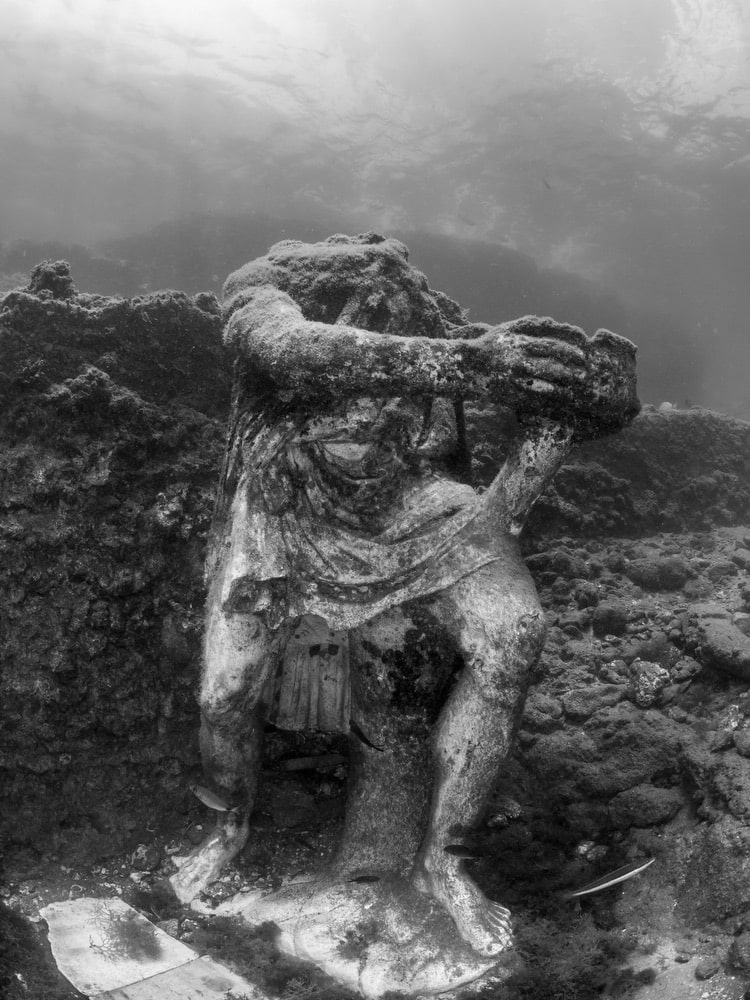
An ancient statue at the famous underwater archaeological site of Baia in Italy | Photo by Danilo Mongiello /Dreamstime.com
Designated a marine protected area two decades ago, the 437-acre underwater archaeological park is awash with millennia-old mosaic tiles, Roman columns, ruined villas, and even oriental fish ponds. With most of these sites submerged four to six meters below the surface (around fifteen to twenty feet), it’s not only divers but also canoeists and glass-bottomed boat passengers who can turn the clock back to the second century AD when they visit.
Like Roman relics above the waterline, these subterranean antiquities aren’t immune to the elements and increasing climate change. Cue the pioneering project working to conserve Italy’s sunken past for future generations with the help of groundbreaking acoustic technology.
“We need to get in situ, real-time, continuous data to protect everything underwater: the environment, the cultural heritage,” professor of computer engineering at Sapienza University of Rome Chiara Petrioli tells me over Zoom. But this relies on communication, a challenge in an ocean environment where electromagnetic waves can’t transmit.
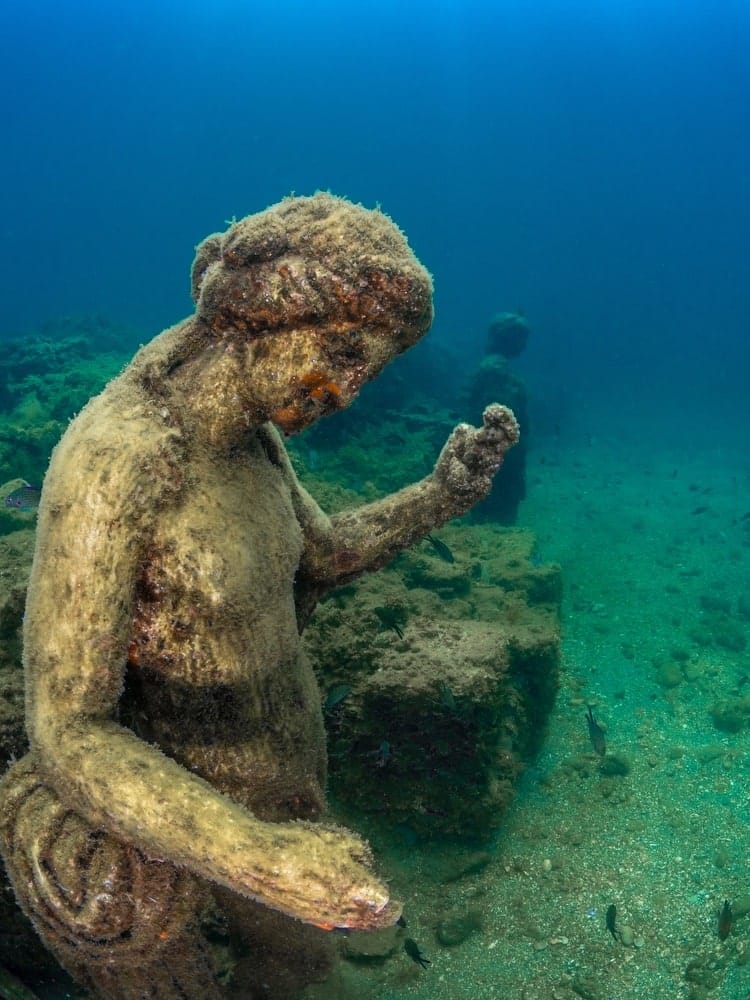
A statue of Dionysus with a crown of ivy in Claudius’s nymphaeum
The seaside resort was buried in the annals of history for fifteen hundred years until Italian Air Force pilot Raimondo Baucher eyed it from the skies in 1940.
“We’re using sound like marine animals do to chat with one another,” Petrioli explains of the technology that she, together with a SWAT team of archaeologists, engineers, and computer science specialists, are deploying in Baia. It’s part of a more comprehensive project called Musas, founded in 2017 to protect the underwater archaeological heritage of two other Italian sites, Egnazia in Puglia and Calabria’s Caulonia.
By using a network of innovative sensors capable of measuring the water’s CO2 levels, locating a diver, and even taking pictures, Petrioli plans to “make an underwater wireless observatory.”
After years of prototypes, July 2020 marked a watershed moment for the project. A dozen wet-suited archaeologists (including Musas’s scientific director Barbara Davidde) descended to Baia’s murky depths. In addition to wearing miniature versions of the acoustic sensors, they wielded waterproof smart tablets to test the technology. This included chatting over an underwater WhatsApp, one of two different apps developed by the team. “This app could help archaeologists excavating a site to communicate with those on the surface and ask for instruments without having to go up and down,” Petrioli explains.
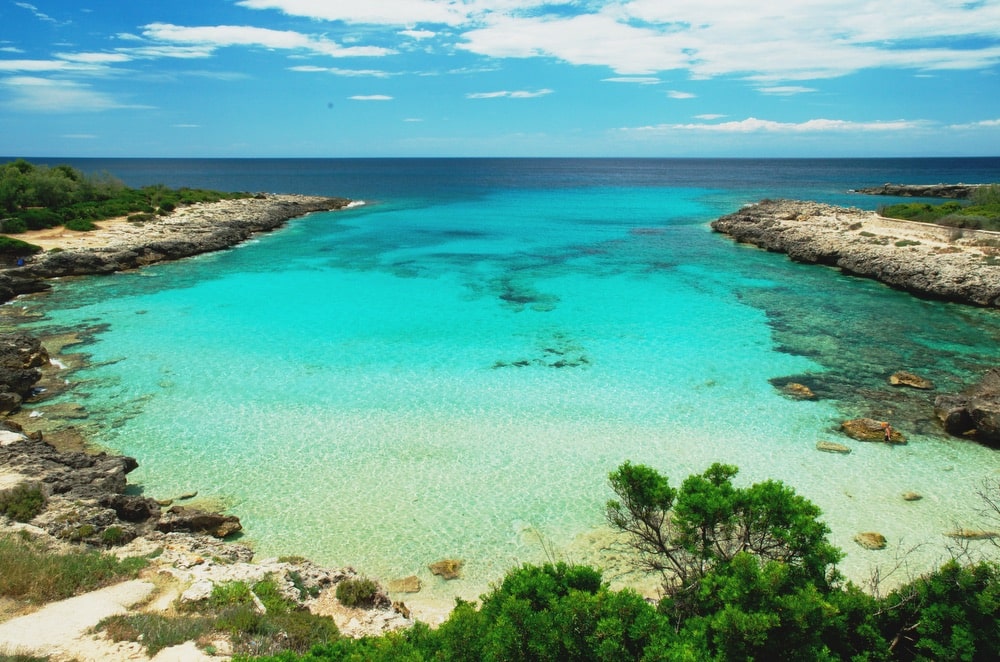
Photo by Gherzak/Dreamstime.com
“The technology also supports underwater GPS,” she continues. This tech enables archaeologists to more accurately locate artifacts like Baia’s yet-to-be-dated multicolored mosaic that decorates the foundations of a bathhouse. These grand domed structures were fed by curative volcanic springs—the very thing that lured Rome’s nobility here in the first place and sealed Baia’s explosive fate.
Harnessing 3D technology, Musas’s second app “allows the divers to see the site as it would have originally been, using virtual reality,” Petrioli tells me. One such sunken treasure is Emperor Claudius’s nymphaeum. Described as a “grotto of pleasure,” it’s studded with replica statues.
Despite excavations of this real-life Atlantis getting underway in 1960, opportunistic divers still swam off with ancient amphorae. Several statues were also carted off overseas, with one ending up at LA’s Getty Museum. Rightfully returned in 2018, the figure of Zeus Enthroned now stands alongside Emperor Claudius’s sister in the fifteenth-century castle-turned-museum Campi Flegrei, part of the Campi Flegrei Archaeological Park.
Another crucial piece in the team’s technological arsenal is an AI-supported underwater wireless video system, created “to see anyone who shouldn’t be there, because you need to protect what you discover,” Petrioli asserts. This surveillance setup may also shed light on the stone and marble-burrowing aquatic life slowly defacing Baia’s statues, a process known as bioerosion.
Petrioli explains how the project is also “giving us missing big data on the oceans,” explaining that “climate change is posing a risk for underwater cultural heritage. Satellites only provide information about the very superficial layers of the sea.” With the help of one permanent acoustic sensor anchored (in a protective casing) to the seabed, the team is recording the ocean’s vital stats: temperature, pH, salinity, and oxygen. And, crucially, it’s all in real time.
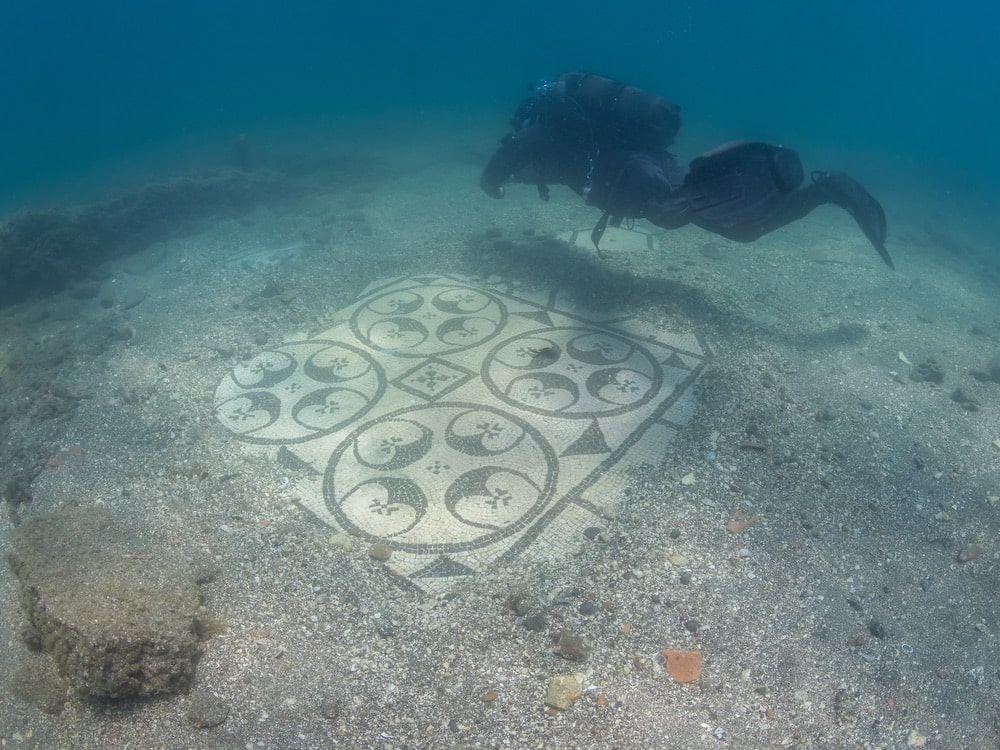
Divers observing the stunning ornate tessellate in the submerged ruins of Baia | Photos by Jeremy Brown /Dreamstime.com
Harnessing 3D technology, Musas’s second app “allows the divers to see the site as it would have originally been, using virtual reality
There’s also the potential to monitor volcanic activity. The team conducted trials for temporary installation sensors to measure CO2 levels close to the volcanic vents that bubble up the ruins. Baia sits in the shadow of one of the most populated active volcanoes on earth, the Phlegraean Fields. Though slumbering right now, the eight-mile-wide supervolcano (one of twenty in the world) still emits sulfurous jets of steam.
Back in the water, Baia’s story is still being written as artifacts continue to be dredged from the sea floor, the most recent discovery being a massive marble column uncovered last October. “There are at least a thousand sites off our coast, and likely more,” Petrioli says of the country’s submerged archaeological riches. The technology has already been tested at two: the first on Ponza, a hilly island off central Italy’s western coast, and the second in Puglia, aka the rustic heel of Italy’s “boot.” Only last year, Italy’s Ministry of Culture established a new department dedicated to conserving the country’s underwater historical relics. “We hope this project will evolve, resulting in more marine parks and underwater cultural heritage sites,” Petrioli tells me, explaining that Musas’s underwater wireless sensor network has now been partially installed in Baia. “We want to be able to replicate this technology for Italy and beyond.”
— V —
To learn more about the project, visit ProgettoMusas.eu.
Share This Story!
KEEP UP WITH THE LATEST STORIES FROM VIE

































































































































